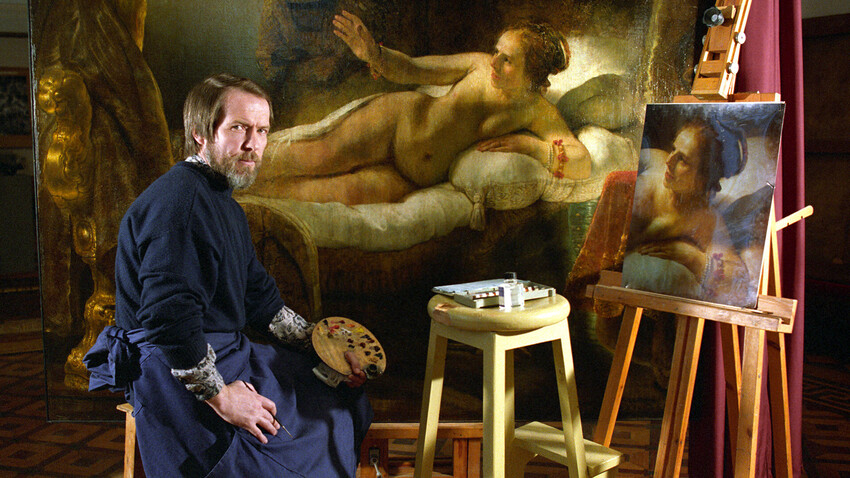

Fragment of Repin's painting after vandal attack with knife in 1913
Public domainIn the Winter of 1913, visitors at the Tretyakov Gallery heard a booming cry of “Enough blood! Down with blood!” With that, an Old Believer by the name of Abram Balashov lunged at the Repin painting, managing to slice it three times with a knife and disfiguring the faces of Tsar Ivan the Terrible and his son. The swings were so powerful that the blade became lodged in the subframe’s crossbar. The gallery staff were in a state of veritable shock. Artist Ilya Ostroukhov, one of the museum’s trustees, ended up resigning, while the museum’s keeper Yegor Khruslov committed suicide by throwing himself in front of a train. Repin quickly arrived in Moscow with an entourage of restorers to salvage the situation. The painting was moved to a new canvas, with the damaged fragments completely redone.
History ended up repeating 100 years later, in 2018: Igor Podporin, an inebriated museum visitor, took one of the security poles and swung it at the painting’s protective glass frame: Repin’s masterpiece was damaged in three places, leading to the museum allocating an entire separate restoration space, where the painting spent four long years being restored.
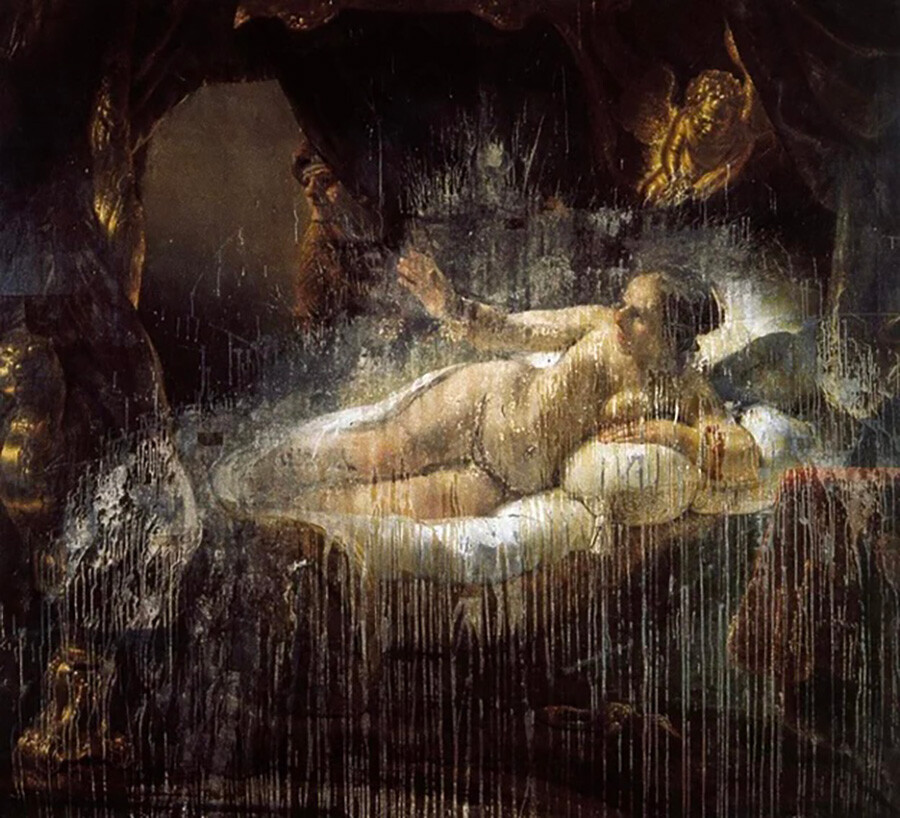
One of the Hermitage’s undoubted masterpieces could have been completely destroyed, due to the damage caused to it in the Summer of 1985 by one Bronus Maitis – a Lithuanian tourist. He approached the museum staff, asking what the most prized artwork was, and, having received an answer, promptly headed for Rembrand’s ‘Danae’, slicing it several times with a knife, then dousing it in sulfuric acid. The beautiful ‘Danae’ began to bubble in front of the shocked observers’ eyes, with almost 30 percent of the colored layer having been destroyed. The staff quickly took down the painting and rinsed it with water, which is the only reason that any portion of it managed to be restored. The work itself took 12 years. Some fragments, however, have been lost forever. The painting was, again, put on display in 1997.
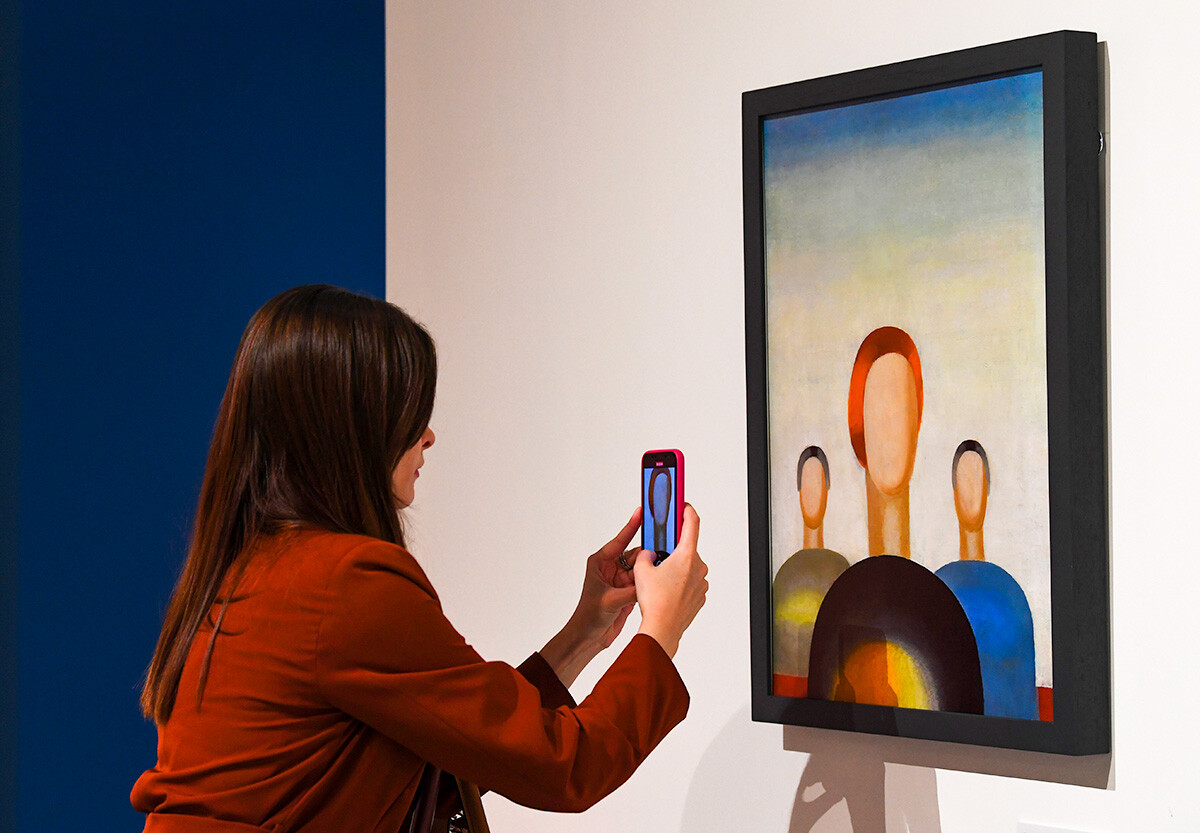
In December 2021, Alexander Vasilyev, a security guard at Ekaterinburg’s ‘Yeltsin Center’, decided to take a ballpoint pen and draw eyes on the faces of two vaguely fleshed-out figures on the painting of avant-garde artist Anna Leporskaya at the Tretyakov Gallery. According to the vandal, he was simply bored and believed that the masterpiece by one of Malevich’s students was closer to a child’s work than anything serious. The canvas was fortunately restored and, in what seemed like an uncharacteristic moment of mercy, Vasilyev was spared by the court on the grounds that his actions couldn’t be considered a genuine, premeditated attempt to cause damage.
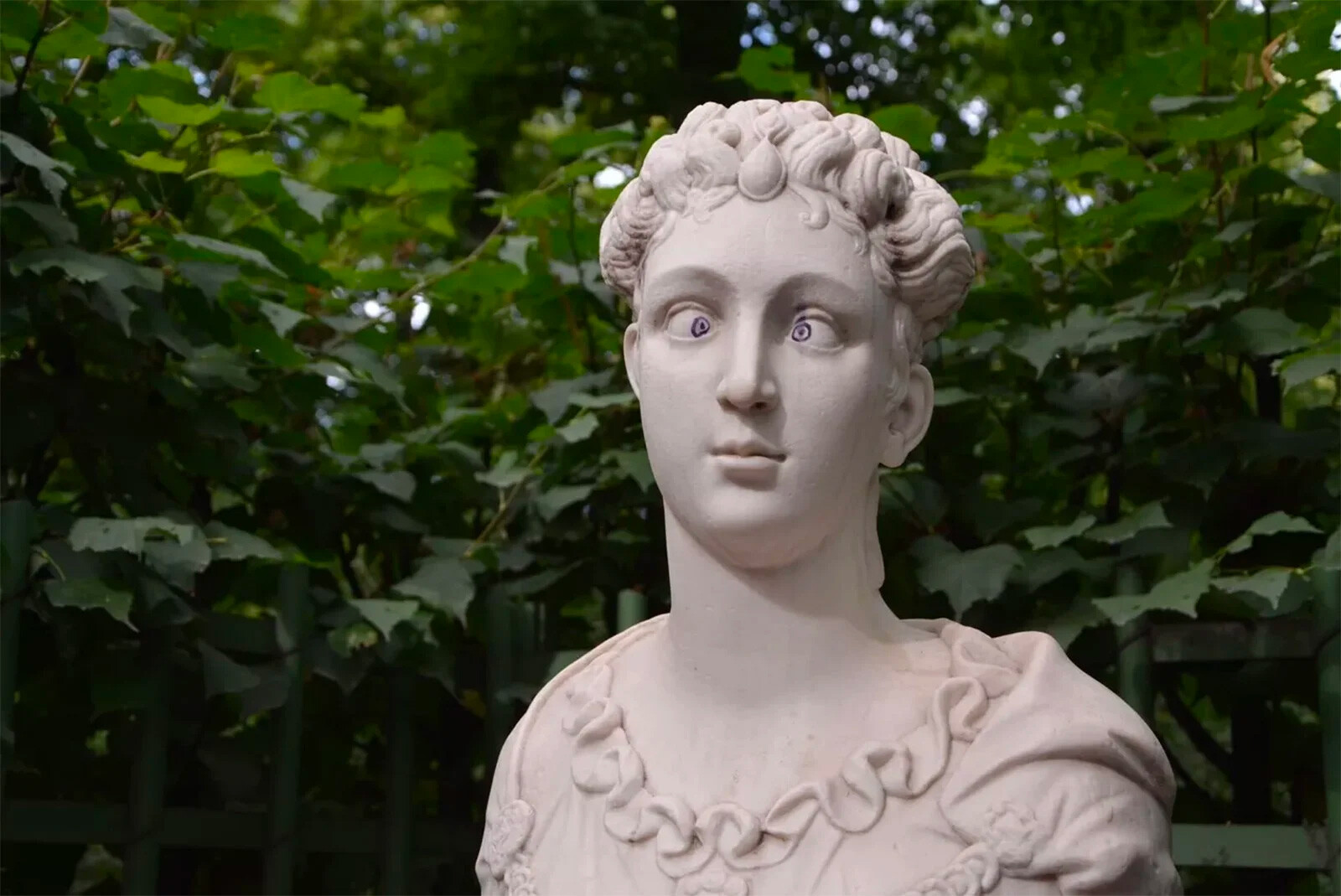
Slight “improvements” to original works aren’t all that rare, it turns out. This fate also befell the bust of Petronia Prima, which stands in St. Petersburg’s Summer Garden. In the Fall of 2022, an unidentified man also decided to give it “eyes”. Luckily, it was an artificial marble replica – the unscathed Antonio Corradini original can be seen at Saint Michael’s Castle, also in St. Petersburg.
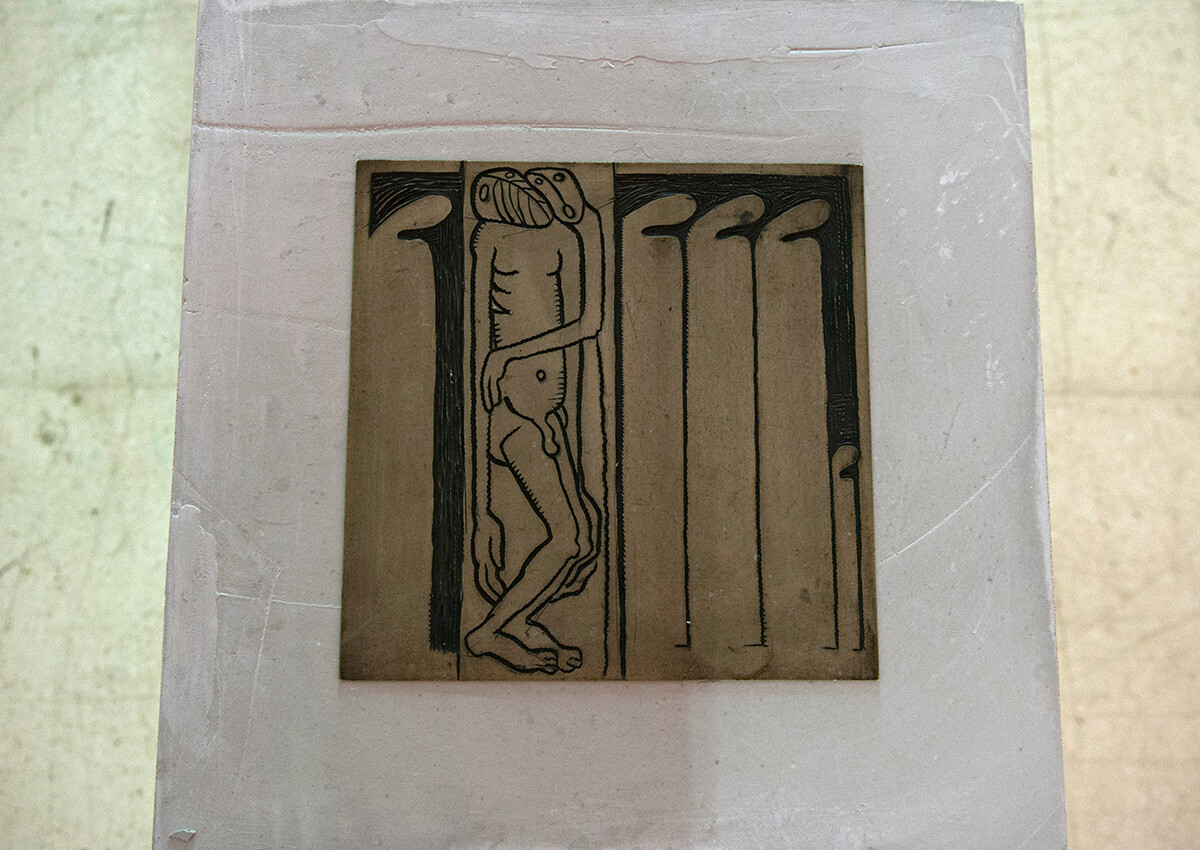
Religious views are sometimes also to blame for artworks being disfigured. In 2015, Orthodox Christian activists from the ‘God’s Will’ movement attacked the ‘Sculptures We Don’t See’ exhibition at Moscow’s Manezh. It turns out, they weren’t fans of the nonconformist Vadim Sidur: according to them, the artist portrayed God in an unfavorable light. An exchange of views at the scene led to damage caused to several of Sidur’s linocuts, depicting Christ’s crucifixion, as well as a sculpture of John the Baptist.
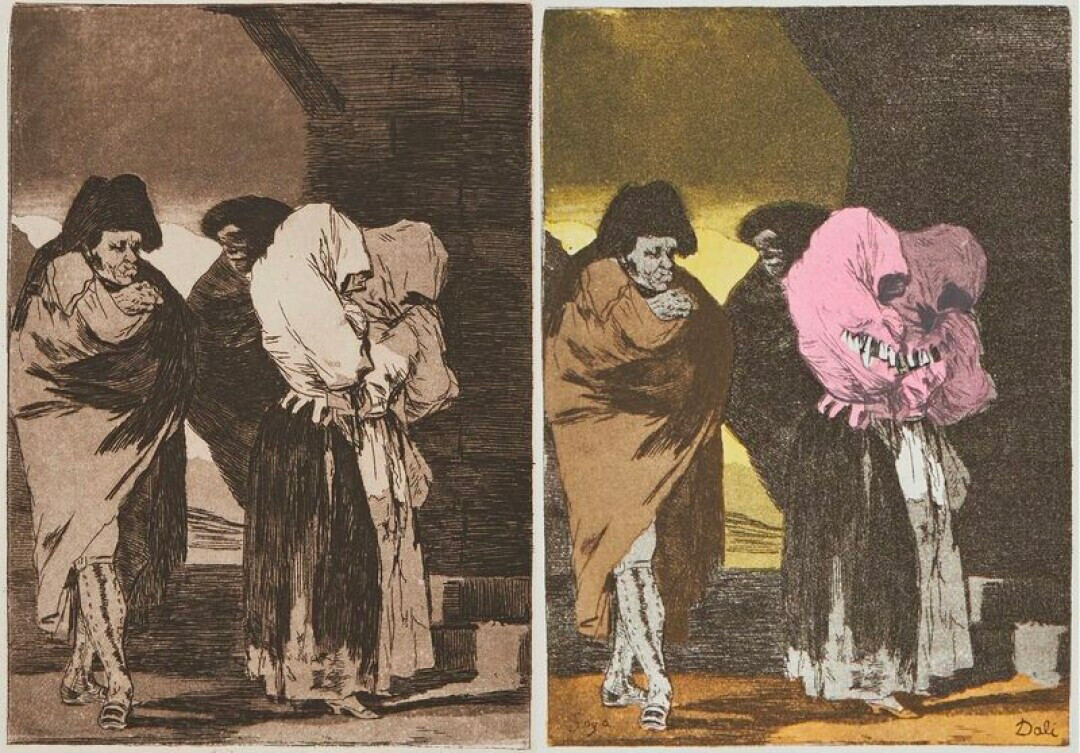
In 2018, several exhibits at Ekaterinburg’s ‘Glavniy Prospekt International Art Center’ fell prey to lovers of selfies. Three female visitors wanted to take photos in front of Dali and Goya’s ‘Caprishos’ so badly, they ended up knocking over the stand that held Goya’s ‘Bravissimo!’ etching, as well as Dali’s surrealist reinterpretation, ‘No’. Goya’s work had its frame and glass damaged, while Dali’s canvas suffered a hole.
Dear readers,
Our website and social media accounts are under threat of being restricted or banned, due to the current circumstances. So, to keep up with our latest content, simply do the following:
If using any of Russia Beyond's content, partly or in full, always provide an active hyperlink to the original material.
Subscribe
to our newsletter!
Get the week's best stories straight to your inbox